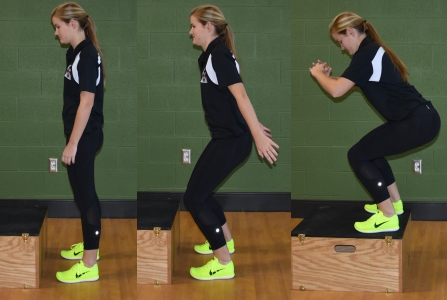This course focuses on training strategies and tools appropriate for athletic populations. In particular, students will learn: 1-RM strength testing, Wingate protocols, Tabata training, snatch progressions, clean progressions, plyometrics.
Target population: Athletes, advanced clients
- Course Instructor: Graeme Thomas
- Lab Technician:
- Semester: Four
Lab Sections:
- Section 1: Thursday 8 – 10 AM
- Section 2: Friday 10 – 12 PM
- Section 3: Thursday 10 – 12 PM
- Section 4: Friday 12 – 2 PM
My Performance Logs: Create a New Testing Log Sheet
No Entries Found
Lab Schedule
| Course: PHRE 5003 - High Performance Training | Movement Pattern: Lower Body | Target: Quadriceps | Synergist(s): Gastrocnemius, Gluteals, Hamstrings |
| Exercise |  | ||
| Regressions: | Progressions: | Depth Jump | |
| Key Teaching Points | Expectation: [if 456 equals="Supervised Practice"]Supervised Practice [/if 456][if 456 not_equal="Supervised Practice"]Independent Learning[/if 456] | [579] | |
|---|---|---|---|
| Description: | Box jumps are a plyometric movement designed to improve explosive power, therefore when prescribed should be limited to sets of 6 reps or fewer, with each jump done explosively and with perfect technique.
Common Errors
| ||
| Common Error(s): | Valgus knees | ||
| Spotting: | |||
